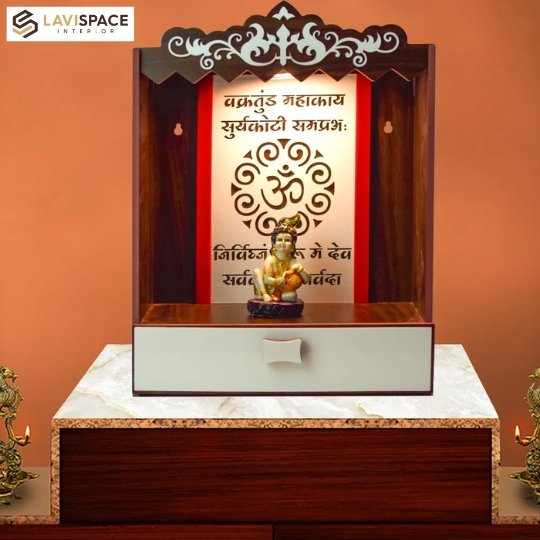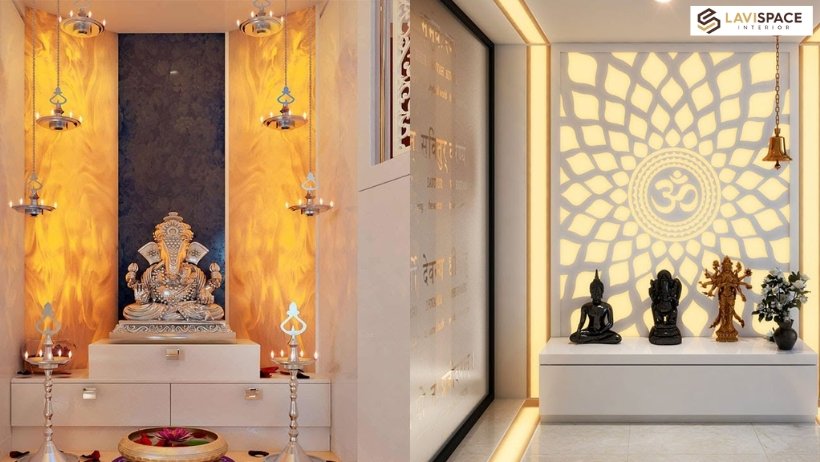The Pooja room is an essential part of Indian homes where we connect with divine energy and offer prayers. Designing the perfect Pooja room Vastu requires careful planning and attention to detail. From following the principles of Vastu Shastra to selecting the right type of Pooja room variation, many factors exist to consider when creating a sacred space in your home. In this article, we will explore different aspects of designing the perfect Pooja room , including auspicious colors, materials, and decorations.
Vastu Guidelines for Designing a Pooja Room

According to the Pooja room Vastu Shastra is a sacred space that represents the divine energy in a house. It’s a place to connect with their inner self and the divine power. If you’re planning to design a Pooja room in your home, here are some Vastu guidelines to keep in mind:
1. Location: The Puja room as per vastu should ideally be in the northeast, east, or north direction of the house. Avoid placing it in the south or southwest direction as it may bring negative energy.
2. Flooring: The flooring of the Pooja room should be made of marble, tiles, or any other stone material. Avoid using wooden flooring as it may absorb positive energy.
3. Colors: The walls of the Pooja room Vatsu should be painted in light colors like white, light blue, or light yellow. Avoid using dark colors like black, gray, or brown.
4. Door: The entrance to the Puja room as per vastu should be in the east or north direction. The door should be made of wood and decorated with carvings or other embellishments.
5. Idols: The idols or pictures of deities should be placed in the east or west direction. Ensure that they are at least an inch away from the wall.
Types of Pooja Room Variations
The Pooja room, also known as the prayer room or the temple room, is an important space in many Indian homes. While traditional Pooja rooms vastu have a simple design with a small area for prayer and an idol, modern Pooja rooms have evolved to include various styles and features. Here are some of the most popular types of Puja room as per vastu variations:
Traditional Rooms
A traditional Pooja room typically has a simple design with a wooden door and an idol or picture of a deity placed on a pedestal. The room is usually painted in light colors and has minimal lighting.
Contemporary Rooms
A contemporary Pooja room vastu features modern design elements like glass doors, trendy light fixtures, and abstract art. It may also include built-in cabinets for storage and display of religious artifacts.
Wall-mounted Rooms
A wall-mounted Pooja room is a space-saving option for smaller homes. It is typically mounted on a wall and features a compact design with an idol or picture of a deity and a small shelf for offerings.
Modular Rooms
A modular Pooja room is a customizable option that can be assembled according to your requirements. It can include various design elements like glass panels, lighting, and storage shelves.
Pooja Room under the Staircase
A Pooja room under the staircase is a unique and creative way to utilize the space under the stairs. It features a small alcove with an idol or picture of a deity, a light fixture, and storage shelves.
Conclusion:
Designing the perfect Pooja room Vastu requires careful consideration of various factors, from selecting auspicious colors to choosing the right type of puja room as per vastu variation. At Lavispace, we offer a range of Pooja room design services that cater to your personal preferences and the principles of Vastu Shastra. Our team of experienced designers will work with you to create a Pooja room that reflects your beliefs and adds to the overall aesthetics of your home. Whether you prefer a traditional or modern design, we can create a sacred space that brings peace and tranquility to your home.




